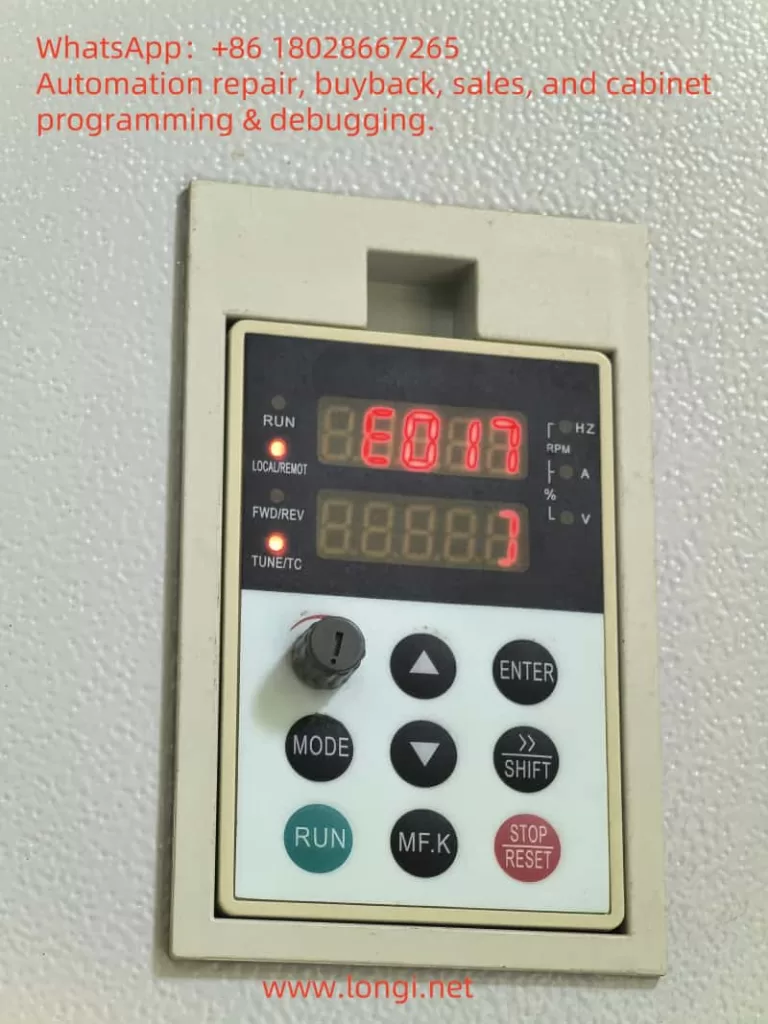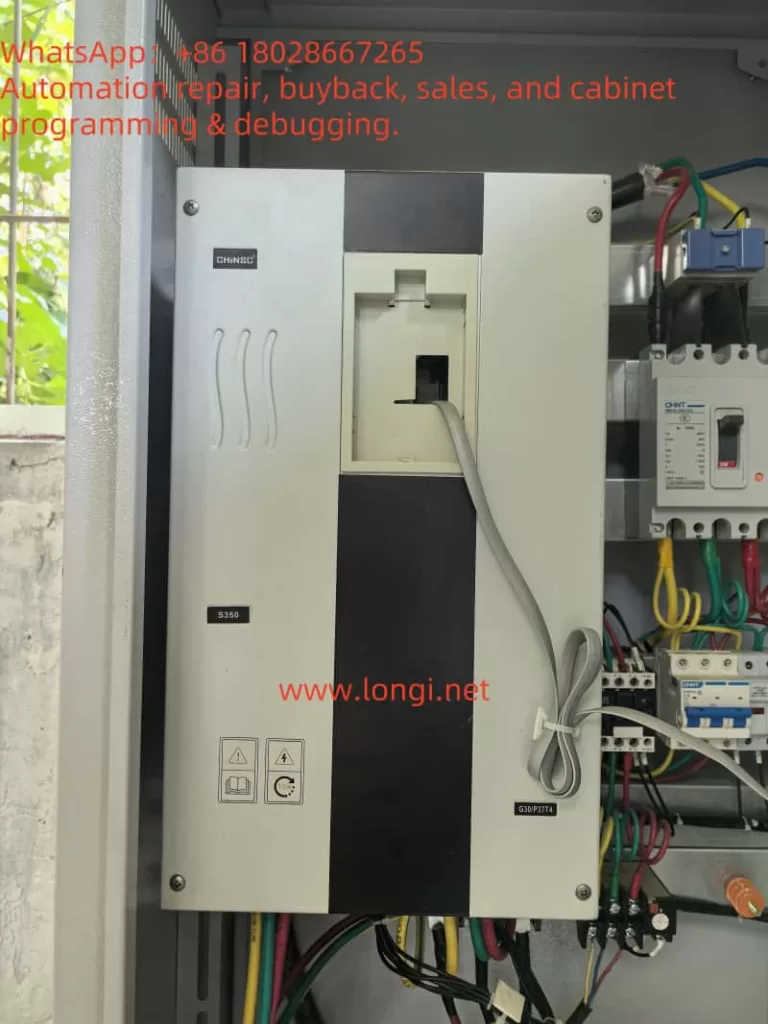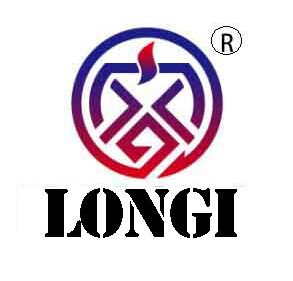1. Introduction: Background and Importance of the Fault
In industrial automation systems, inverters play a vital role in controlling motor speed, improving energy efficiency, and enabling flexible control. The Shengchuan S350 series inverter is widely used in automated production lines due to its high performance and reliability. However, when the inverter displays error code E017, it usually results in a startup failure or shutdown, which can seriously impact production continuity. Understanding the real cause behind the E017 alarm, distinguishing it from misinterpretations, and knowing how to troubleshoot it efficiently are crucial for technicians and maintenance engineers.

2. Understanding the E017 Fault Code
2.1 What Does E017 Mean?
In the Shengchuan S350 inverter, E017 is defined as a contactor fault, which occurs when the internal main circuit contactor (often the pre-charging or main contactor) fails to engage or the feedback signal is missing during power-up or start-up phases.
2.2 Misinterpretation in Some Manuals
Some manuals may mistakenly describe E017 as a “keypad fault.” However, in actual on-site scenarios and based on electrical logic and signal paths, this alarm is clearly linked to internal contactor failures, not the keypad (HMI) panel.
3. Causes of E017 Fault – Multi-dimensional Analysis
| Type of Cause | Specific Issues | Field Symptoms & Hints |
|---|---|---|
| Contactor Component | Coil damage, oxidized or welded contacts | No clicking sound during start-up; blackened contacts |
| Drive Signal Failure | No output signal from control or drive board | No control voltage present at coil terminals |
| Feedback Circuit Issue | Feedback contact not closing or faulty | Contactor works, but inverter doesn’t recognize it |
| Power Supply Instability | Low voltage, failing power board | Insufficient coil voltage to energize contactor |
| Control Logic Misjudge | Incorrect sequence or parameter settings | Inverter fails to detect correct engagement logic |
4. Step-by-Step Troubleshooting Procedure
4.1 Listen for Sound and Check Contactor Action
- Upon power-up or start, is there a clicking sound (“clack”) from the contactor?
- If no sound is heard, the contactor might not be energized or is physically damaged.
4.2 Measure Coil Voltage
- Use a multimeter to check whether the contactor coil receives the control voltage (usually DC 24V or AC 220V).
- If no voltage is detected, the issue is likely with the drive board or control signal.
4.3 Check Feedback Contact Integrity
- Some inverters monitor auxiliary contacts on the contactor for feedback.
- If the auxiliary contact is damaged or misaligned, even a working contactor may trigger E017.
4.4 Swap and Compare Boards
- If you have another working S350 inverter, try swapping the contactor or drive board.
- If the fault moves with the board, it’s likely a board-level issue. If it stays, the contactor is to blame.

5. Repair and Replacement Recommendations
5.1 Replace the Contactor
- The most effective solution is to replace the faulty contactor with a manufacturer-approved component matching the same coil voltage and rated current.
- Ensure proper tightening of terminals and clean installation surface.
5.2 Drive Board and Power Board Check
- If the contactor has no drive signal, check if the relay or transistor circuit on the drive board is faulty.
- A failing power supply board may output unstable voltage and should be checked or replaced.
5.3 Wiring and Signal Feedback
- Verify all wiring is tight, corrosion-free, and correctly routed.
- Clean and reconnect feedback lines if necessary.
5.4 Parameter Initialization and Reset
- After component replacement, perform a full reset of the inverter and reconfigure necessary startup parameters.
- Check if the inverter correctly recognizes contactor engagement signals.
6. Practical Case Studies
Case 1: Drive Board Failure
A technician encounters E017 on an S350 inverter. No clicking sound is heard on power-up. Measuring the coil terminal reveals 0V. After swapping the drive board with one from a working unit, the contactor clicks and the inverter starts normally. Conclusion: the original drive board failed to output the control signal.
Case 2: Feedback Contact Issue
Another unit shows E017 but the contactor does engage. Closer inspection shows the auxiliary feedback contact did not close properly due to carbon build-up. Cleaning restored function, but to ensure long-term reliability, the contactor was later replaced.
7. Preventive Maintenance Tips
- Regularly Clean Contactors
Prevent dust, moisture, and carbon buildup from interfering with mechanical motion or electrical contact. - Monitor Power Supply Quality
Ensure stable voltage supply to the control board and contactor coil to prevent intermittent faults. - Log Faults and Spare Part Info
Keep a history of faults and maintain a stock of critical spares such as contactors, drive boards, and power boards. - Perform Routine Start-Up Tests
Periodically run the inverter in test mode to check for early signs of engagement or feedback failure.
8. Summary and Conclusions
- The E017 error code in the Shengchuan S350 inverter most accurately refers to an internal contactor failure, not a keypad issue.
- Diagnosing the fault involves confirming whether the contactor actuates, checking for control voltage, and verifying feedback signal integrity.
- Most common causes include faulty contactors, failed drive boards, or broken feedback circuits.
- Effective troubleshooting requires listening for sounds, using a multimeter for voltage checks, and replacing components as needed.
- Preventive maintenance and spare part readiness are essential to avoid prolonged downtime in industrial systems.
